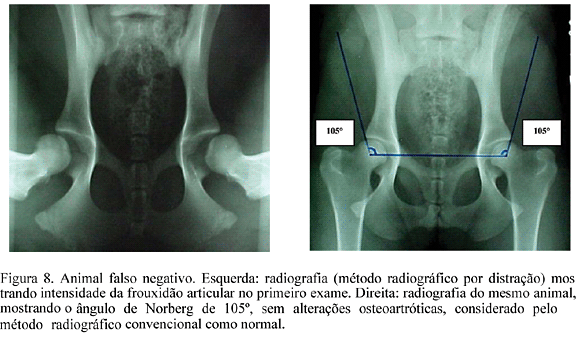Aiming the canine hip dysplasia (CHD) early diagnosis, 60 dogs of both sexes (32 females and 28 males) and of different breeds had their hip joints radiographically studied. The X ray examinations were taken in early age (7.2± 1.2 months) and repeated at adult age (14.4± 1.6 months) using the conventional radiographic method (CRM) and the radiographic distraction method (RDM) performed, by its turn, with a new device, specially designed or this experiment. In order to quantify the relationship between the femoral head and the acetabulus the Norberg Angle (NA) was measured at CRM and the distraction index (DI) was calculated at RDM. There was a significant statistical correlation (P<0.001) between DI of the first examination and NA of the second examination. The cut off for sick and normal subjects for DI was 0.35. The dogs with DI values greater than 0,35 presented radiographic signals of degenerative joint disease (DJD). Interestingly, the highest was the DI; the greatest were the radiographic signals of DJD. Four animals considered normal when CRM was performed at second examination had DI superior than 0.35 at first examination. This fact shows that false negative results can occur when only the conventional method is used. Two of three sick dogs that had DI values bellow 0.35 were classified as borderline by CRM. This confirms the indefinite of this class. The association of CRM and the proposed method showed to be extremely useful in early age CHD diagnosis, as it can predict the adult age phenotype.
hip dysplasia; distraction index; Norberg angle; dog













